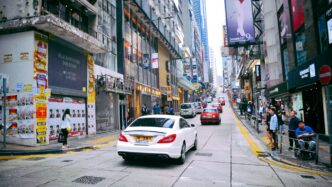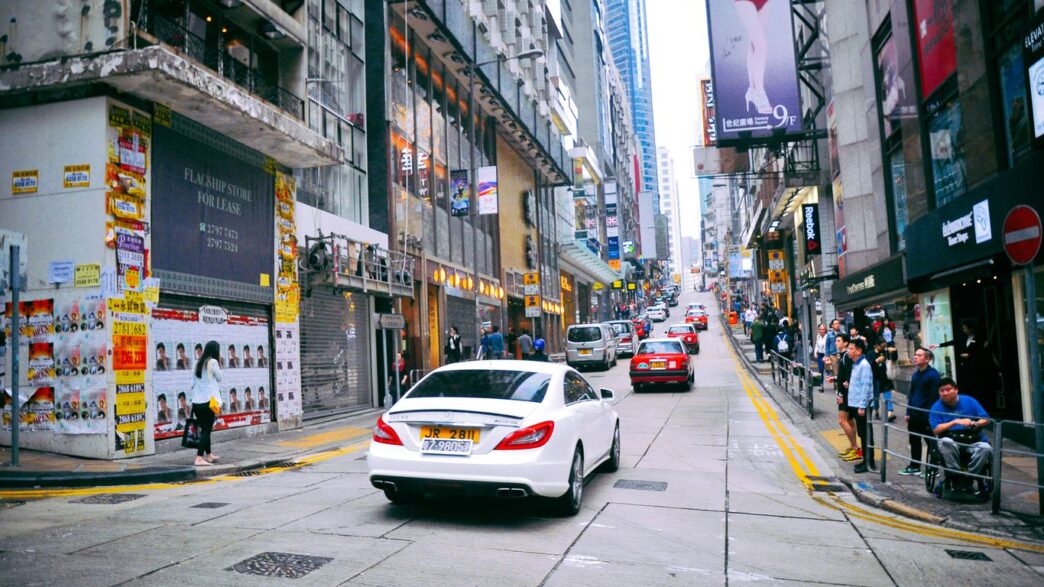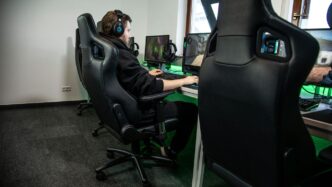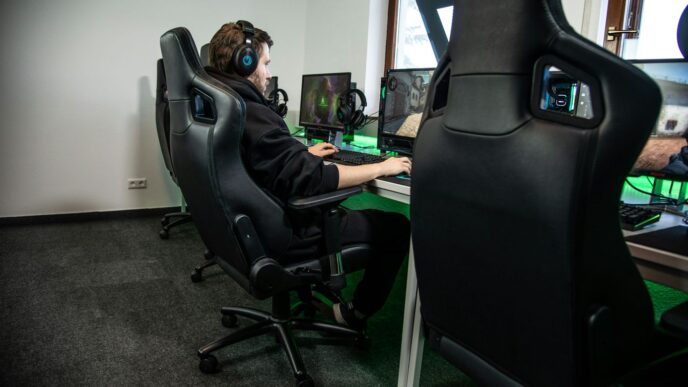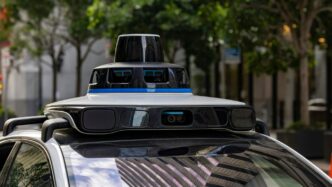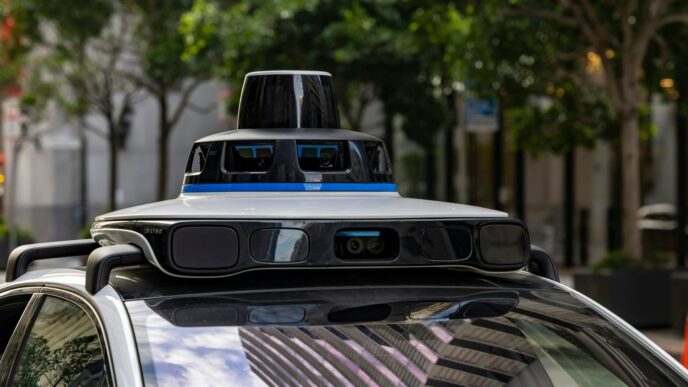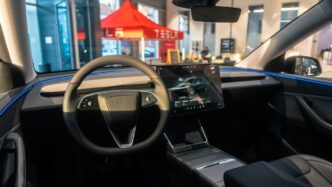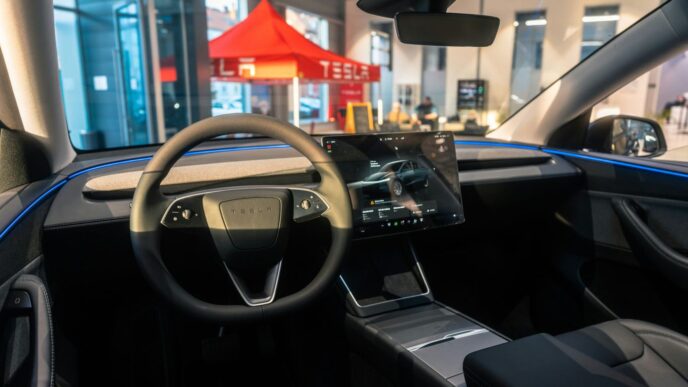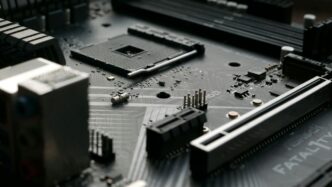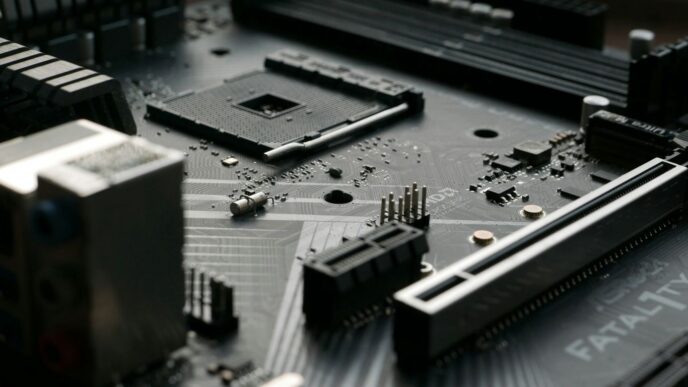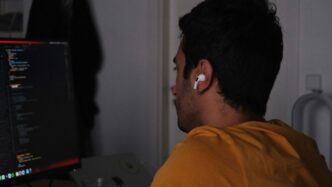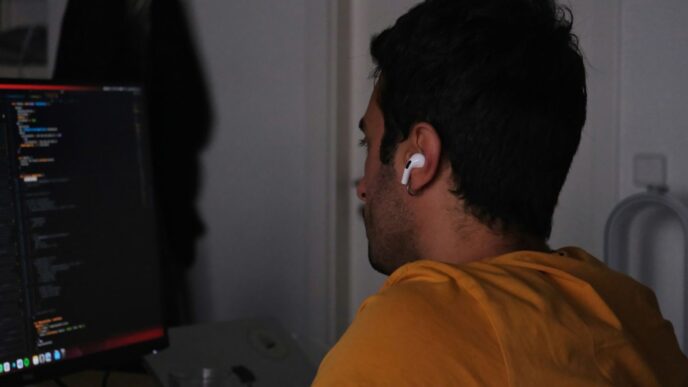Breakthrough Advances in Autonomous Vehicle Camera Technology
Camera systems in self-driving cars have come a long way in the last five years, making a huge impact on how well these vehicles can interpret and react to all sorts of driving situations. It’s not just about seeing clearer, but about catching tricky scenes in rain, fog, night, and sometimes all at once.
Integration of Multi-Spectral Imaging for All-Weather Performance
Multi-spectral cameras are really changing the game for autonomous vehicles. By capturing different bands of light—like visible, infrared, and sometimes even ultraviolet—these cameras help cars spot road features no matter the weather. Snow covering lane lines? Multi-spectral imaging can sometimes see what the human eye (or basic cameras) can’t.
Here are some upsides of multi-spectral integration:
- Cut through fog and heavy rain when regular cameras start missing details
- Pick up heat signatures from pedestrians and animals at night
- Detect obstacles camouflaged by glare or shadows
Many companies are adding low-cost infrared sensors right into platforms alongside traditional chips, boosting redundancy and improving overall safety.
Wide Dynamic Range Solutions for Day and Night Operation
Managing sudden light changes—like coming out of a dark tunnel into bright sunlight—is tough. Wide Dynamic Range (WDR) camera sensors help solve this. They handle scenes with both super-bright and super-dark areas at the same time, so important things don’t get lost in glare or shadow.
A quick comparison of old vs. new camera capabilities might look like this:
| Feature | Standard Camera | WDR Camera |
|---|---|---|
| Handles Sun Glare | Poor | Excellent |
| Night Vision | Limited | Good |
| Tunnel Transitions | Struggles | Fast Adjustment |
These kinds of upgrades seriously lower the chances of missed hazards in parking lots, sun-drenched highways, or on dark rural roads.
Evolution of High-Resolution Camera Sensors for Enhanced Detail
Higher resolution means cameras can spot smaller objects from farther away—or pick out important changes, like a bicyclist merging into traffic. Even last year’s standard for pixel counts is starting to feel outdated as new sensors hit the market.
Here’s what’s pushing this trend forward:
- Cameras are moving from 1-2 megapixel sensors to 8 megapixels (or higher) in advanced systems
- More pixels support finer object classification and better tracking
- Engineers face a trade-off between high resolution and the need for quick image processing—both for safety and for saving on hardware costs
In daily traffic, these leaps mean fewer missed road signs, more accurate navigation in crowded city scenes, and a better shot at avoiding cyclist or pedestrian accidents.
It’s an exciting time. New camera technology, paired with improvements in computing and smart algorithms, is giving autonomous vehicles sharper eyes than ever before. The real test? Let’s see how they handle a foggy Monday morning after a week of snow—real roads are always tougher than the lab.
Sensor Fusion: Combining Cameras With LiDAR and Radar for Superior Perception

Self-driving cars rely on more than one type of sensor to get a clear sense of their environment. Cameras, LiDAR, and radar all have strengths and weaknesses, so combining their data—what people call sensor fusion—just makes sense. It’s this teamwork between different sensors that gives autonomous cars a better shot at handling real-world challenges.
Adaptive Sensor Fusion Algorithms to Optimize Data Integration
No two days on the road are alike. One minute it’s bright and clear, the next, rain or fog rolls in. Adaptive sensor fusion algorithms step in by dynamically tuning how sensor data is blended, depending on changing conditions. Here’s what goes into it:
- Sensors are constantly evaluated for reliability—if a camera’s view is blocked, the system adjusts how much it relies on radar or LiDAR instead.
- Algorithms can operate at different levels, from combining raw data early on to merging processed info after object detection.
- Fusion strategies change in response to weather, lighting, or even sensor health, so the stack is never using a static formula.
This approach helps keep the car aware of its surroundings, even if one sensor gets unreliable mid-drive.
Mitigating Sensor Limitations in Adverse Weather Conditions
Every sensor stumbles in specific tough scenarios:
- Cameras struggle in glare, darkness, or heavy rain.
- LiDAR can get tripped up by snow, fog, or mud.
- Radar isn’t great at picking out static or small objects, though it pierces through rain and snow.
To make the most of this mix, engineers tackle these limits by:
- Using sensor-specific compensation: like weather calibration models and adaptive exposure.
- Tracking objects over time, even if one sensor drops out temporarily.
- Employing map data as a backup when the direct view is bad.
A quick comparison:
| Sensor | Great For | Trouble With |
|---|---|---|
| Camera | Signs, lanes, color, text | Low light, glare, rain |
| LiDAR | Measuring distance, shape | Fog, snow, dirt |
| Radar | Motion, through weather | Detail, small objects |
Balancing Data Streams for Accurate Real-Time Decisions
All this extra data is good, but it brings new headaches. Processing loads go way up, and the car has to decide what information truly matters, fast. Here’s how developers keep things in check:
- Priority rules: Safety-critical events (like sudden debris) always get priority, with less urgent info queued for later.
- Smart filtering: Unimportant data is filtered out early to cut down on clutter.
- Hardware choices: High-performance chips now live inside cars to handle the workload, but power and heat are constant worries.
The result is a system where the car isn’t just collecting tons of sensor data, it’s making sense of it on the fly—key for everything from lane-keeping to emergency stops.
By blending sensors, handling real-world surprises, and managing heavy data streams, sensor fusion helps self-driving vehicles stay smarter and safer in the chaos of real roads.
Artificial Intelligence and Machine Learning in Camera-Based Perception
Artificial intelligence is at the heart of how self-driving cars interpret what their cameras see and how they react on the road. In a way, it’s like giving the vehicle a watchful set of eyes and a brain that can sift through all the visual chaos—cars, rain, cyclists, road signs, and even the unexpected squirrel racing across the street. Let’s go through how AI and machine learning are actually used to make sense of the world through cameras on autonomous vehicles.
Role of Deep Learning in Object Detection and Classification
Deep learning models power how self-driving vehicles spot and classify objects, making them more responsive in real-world driving. Today, these cars use advanced neural networks such as YOLO and Faster R-CNN to recognize cars, pedestrians, bikes, and more. Unlike old-school rule-based systems that might confuse a cyclist with a road sign, deep learning models process thousands of labeled driving images. They adapt quicker to oddball objects or scenarios, but:
- They often work as black boxes, making their decisions hard to explain.
- Training demands massive data and computing resources.
- They generally outperform classic vision algorithms in complex scenes.
Here’s a simple comparison to illustrate:
| Feature | Classic Vision | Deep Learning |
|---|---|---|
| Explainability | High | Low |
| Training Data Needed | Small | Large |
| Adaptability | Poor | High |
| Performance in Fog/Low Light | Limited | Good (with data) |
Hybrid Approaches for Improved Reliability and Explainability
Nobody wants their self-driving car to make a strange move it can’t explain, especially in a tricky situation. That’s why engineers are mixing classic and deep learning approaches. Here’s what you typically find in these hybrid systems:
- Simple rule-based vision checks for things like lane markings as a baseline.
- Deep learning models scan for complex obstacles, new road users, and rare objects.
- An ‘explainability layer’ maps what the AI decided to something a human can check or understand if things go sideways.
In real traffic, this blend helps the vehicle avoid the worst-case “AI confusion” moments—where a neural net might suddenly misidentify something critical, like a kid’s toy in the road.
Continuous Learning From Real-World Autonomous Vehicle Camera Data
Autonomous vehicles never really stop learning. New images, surprising events, and changing road conditions all get fed back into improving the system. Data from the field is labeled and used for retraining, so the cars can handle tomorrow’s weird traffic jam or that busy intersection that everyone hates. Some steps in this cycle include:
- Capturing and storing rare or failure scenarios encountered during test drives.
- Labeling scenes with the help of both human annotators and machine learning tools.
- Retraining models to adapt to new road layouts, construction zones, or unusual signs.
This endless feedback loop is behind the steady improvement in the performance of autonomous technology. For example, recent backup camera tech advancements (advanced backup cameras) give self-driving cars more data to work with, making active learning even more important.
So, artificial intelligence and machine learning really sit at the core of what makes camera-based perception for autonomous vehicles work reliably—and safely—day after day, mile after mile.
Ensuring Safety With Autonomous Vehicle Camera Systems
Autonomous vehicle cameras are doing more than just recording the road; they’re on the front lines of making self-driving technology safe and trustworthy. Getting these cameras to reliably help with safety is about much more than just putting high-tech lenses in a car—it’s a balancing act between smart assistance, predictive tech, and robust testing processes.
Advanced Driver Assistance Through Camera-Based Systems
Cameras are a key part of Advanced Driver Assistance Systems (ADAS), turning vehicles into active observers rather than passive machines. These camera systems constantly scan for everything from lane markings to sudden obstacles, enabling the vehicle to make smarter, safer movements.
Here’s what they help with the most:
- Lane keeping to avoid drifting.
- Detecting nearby vehicles and pedestrians.
- Reading traffic lights and signs to follow rules.
- Enabling emergency braking if something jumps into the path unexpectedly.
Predictive Analytics for Proactive Hazard Recognition
Cameras don’t just react—they predict. Smart algorithms run on camera feeds to look for patterns and signals that could point to trouble, such as a cyclist swerving or heavy rain reducing visibility. Even subtle things matter, like slight wheel turns of nearby cars. When the system thinks something risky is about to happen, it can warn the driver or even take over to avoid the hazard.
Common Predictive Uses of Camera Data
| Use Case | Example | Typical Action |
|---|---|---|
| Pedestrian Prediction | Child near crosswalk | Slow down, stay alert |
| Weather Assessment | Rain or fog detected | Adjust speed, increase distance |
| Driver Behavior Analysis | Drowsy or distracted driving | Trigger alert, suggest break |
Validation and Testing Frameworks for Camera Edge Cases
Making sure these systems don’t fail at the worst possible moment is a massive job. Edge cases—rare events the system might not expect—are a huge focus. Testing for these means:
- Using simulations to create unusual or dangerous situations (like sudden animal crossings, mock debris).
- Running in real-world environments with a variety of seasonal, lighting, and traffic conditions.
- Comparing system reactions to a set of "what should happen" results (benchmarks or regulatory standards).
Physical tests are backed up by digital simulations, since some scenarios are just too risky to try on real roads. Teams also cross-check system performance using independent validation groups to catch blind spots developers might miss.
Safety validation isn’t a one-and-done job—it’s a constant cycle of stress-testing, learning, and updating as new situations and data come in.
When it comes to autonomous cameras and safety, it’s not just about seeing more—it’s about seeing smarter, predicting sooner, and never skipping out on rigorous testing.
Operating Cameras in Challenging and Dynamic Environments

Faced with unpredictable roads and weather, self-driving vehicle cameras really have their work cut out for them. It takes more than just a high-quality lens or a sharp sensor—handling sudden lighting changes, rough weather, and real-world messes means using smarter approaches and a lot of practical testing.
Dynamic Exposure Control for Sudden Lighting Changes
If you’ve ever driven through a tunnel or under a bridge on a sunny day, you know how jarring the light difference can be. Cameras in autonomous cars run into this problem all the time. To keep their vision steady, these systems use dynamic exposure controls:
- Cameras adjust shutter speed and ISO settings in real time, depending on the brightness.
- Smart algorithms estimate scene changes, like when leaving a shaded street into blinding sunlight, and adapt the image on the fly.
- Some use predictive models based on map data, knowing when a tunnel or open space is coming up.
This way, the vehicle doesn’t lose "sight" of objects or hazards for those split seconds, keeping things steady for both the car and its passengers.
Environmental Robustness: Fog, Rain, Snow, and Low Light
Bad weather makes things even trickier. Rain, fog, and snow can really drag down a camera’s performance, leading to missed pedestrians or blurry road edges. Some of the ways engineers deal with it include:
- Multi-spectral cameras that can see beyond visible light, allowing better vision in fog or darkness—methods similar to those found in advanced pedestrian detection systems.
- Special anti-fog coatings and hydrophobic glass to stop water droplets from blocking the view.
- Real-time sensor confidence modeling, where cameras rate their own effectiveness moment by moment, alerting the system when things get too hard to see.
| Weather Condition | Common Camera Challenge | Mitigation Techniques |
|---|---|---|
| Rain | Droplets, reflections | Hydrophobic coatings, image filters |
| Fog | Low contrast | Multi-spectral imaging, dynamic contrast control |
| Snow | Obscured lenses | Lens heaters, self-check diagnostics |
| Low Light | Extra image noise | Sensitive sensors, real-time noise reduction |
Climate and Field Testing for Real-World Camera Performance
Even the best theories must face the open road. Before putting cars on city streets, companies test cameras in extreme, controlled environments and unpredictable real-world settings:
- Climate chambers mimic rain, snow, and fog, letting engineers observe sensor trouble and work out solutions.
- Specialized tracks include tunnels, varied surfaces, and lighting to catch edge cases like reflections or sun glare.
- Long-term field trials in different regions uncover surprises that only show up in places with harsh winters or sweltering summers.
All these steps keep camera systems honest and practical, so self-driving cars can roll with whatever the day throws at them.
Edge Computing and Real-Time Processing for Camera Data
When it comes to self-driving cars, getting camera data processed as events unfold—right inside the vehicle—is just as important as collecting the right data in the first place. Edge computing makes this possible, and it’s more complicated than it sounds. Let’s break down what that looks like in practice.
High-Performance Hardware Architectures for In-Vehicle Processing
All those cameras running at once? It creates a flood of information—sometimes up to two terabytes per hour. To keep up, cars use special hardware setups that juggle lots of tasks at the same time. Most systems use a mix of the following:
- GPUs that crunch neural network data (30–250 TOPS is common)
- FPGAs for filtering and aligning images before anything else happens
- Dedicated NPUs to make running AI models less power-hungry
- Ordinary CPUs that manage everything quietly in the background
Here’s how these hardware components compare:
| Processor Type | Main Job | Strength |
|---|---|---|
| GPU | AI and neural network tasks | Fast for complex math |
| FPGA | Preprocessing, filtering | Customizable, efficient |
| NPU | AI inference | Power-saving, quick |
| CPU | General controls, management | Versatile |
Thermal control is a headache, too, especially when the car is sitting in a hot parking lot or cruising through winter cold snaps.
Managing Data Latency for Split-Second Decision Making
Quick reactions are non-negotiable. If the "brain" of the car is too slow, it won’t stop in time, spot a kid running into the street, or adjust to sudden road changes.
- Edge computing keeps delays tiny, aiming for under 100 milliseconds.
- Preprocessing trims video feeds before deeper analysis, making things even faster.
- Smart software schedules heavier tasks when it matters most, like during lane changes or heavy merging.
Here’s a common sequence:
- Cameras grab millions of pixels every second.
- FPGAs filter out noise instantly.
- GPUs and NPUs recognize objects and mark obstacles.
- CPUs manage the decision-making and send commands to brakes or steering.
Thermal Management and Reliability in Automotive Environments
Running all this power in a small area creates heat—a lot of it. If things get too warm, data slows down or fails altogether. On the flip side, extreme cold makes electronics sluggish. To keep everything steady:
- High-grade cooling (fans, heat sinks, and thermal pastes) spread and remove heat.
- Passive cooling lets heat escape without moving parts, giving systems longer life.
- Sensors keep checking temperature; if things look risky, performance is trimmed to prevent damage.
Lastly, parts and boards are installed with shock mounts and water-resistance in mind, since potholes and rain can wreck fragile electronics.
Edge computing isn’t an afterthought—it’s the nervous system keeping self-driving cars alert, safe, and steady through every twist, stop, and surge of modern roads.
Security and Reliability in Autonomous Vehicle Camera Deployments
Protecting Against Sensor Spoofing and Cyber Threats
Keeping a camera-based autonomous vehicle safe from tampering isn’t easy. Cameras can be targets for sensor spoofing, where someone tries to trick the system with fake images or projected patterns. On top of that, the whole car acts as a connected device, so hackers could attack through Wi-Fi, Bluetooth, or even over-the-air software updates. Here’s a closer look at what’s needed to stay ahead:
- Secure boot to make sure the car only runs trusted software.
- Hardware security modules (HSM) to handle encryption and keep keys safe.
- Strong authentication for all remote or wireless connections.
- Intrusion detection systems to watch for weird network activity.
- Strict update validation, so only verified software can be installed.
This defense-in-depth idea comes from aerospace and heavy industry—industries that just can’t have their systems taken over or tricked.
Redundancy and Fail-Operational Strategies for Perception Systems
Cameras aren’t perfect, and in traffic, you can’t just hope nothing fails. Self-driving cars have to keep running—safely—even if something goes wrong like a camera blinding out or a cable breaking. Here are common redundancy strategies:
- Multiple cameras covering overlapping areas, so a single failure won’t obscure the whole scene.
- Using different sensor types—cameras, LiDAR, radar—so one system can back up the others, especially in odd weather.
- Running critical checks: if a sensor goes bad, the car either hands over control (if there’s a driver) or slows down into a safe stop zone.
Sample Redundancy Table
| Component | Redundancy Approach | Example |
|---|---|---|
| Front-Facing Camera | Dual, offset cameras | Wide field |
| Compute Unit | Backup processor | Hot swap |
| Perception Software | Independent algorithms | Cross-check |
Maintenance and Health Monitoring for Camera Longevity
If you let camera issues build up, the whole system slowly gets less reliable. Regular health checks aren’t flashy, but they matter. Here’s how companies are tackling this:
- Automated diagnostics that keep tabs on temperature, focus, cloudiness, and lens cleanliness in real time.
- Predictive maintenance schedules based on sensor data trends—replace before failure, not after.
- Remote monitoring and over-the-air (OTA) updates to roll out fixes before they’re a big deal.
Honestly, camera problems often start small and build up. Early warning helps keep cars running safely and saves a lot of headaches down the road.
Conclusion
So, after looking at all these camera and sensor breakthroughs, it’s pretty clear that self-driving cars are getting smarter and safer every year. The mix of different sensors—cameras, radar, LiDAR, and even some military-grade tech—means these vehicles can see and react to stuff on the road way better than before. Sure, there are still some tough problems to solve, like handling weird weather or unpredictable situations, but the progress is real. Every new update makes these cars a little more reliable. It’s not perfect yet, but the direction is promising. As these systems keep improving, we’ll probably see more self-driving cars out there, and hopefully, that means fewer accidents and safer roads for everyone. It’s kind of wild to think how far things have come, and it’ll be interesting to see what’s next.

